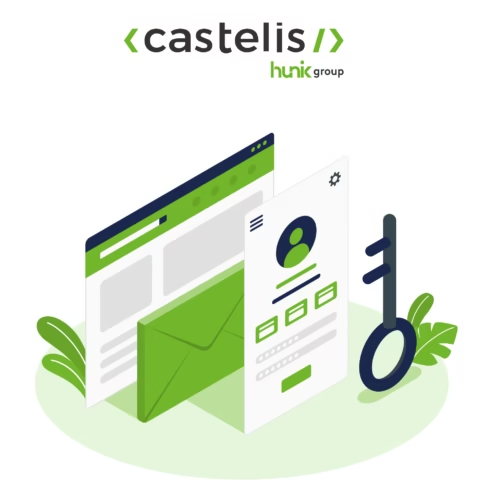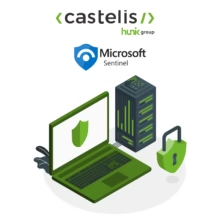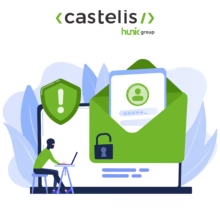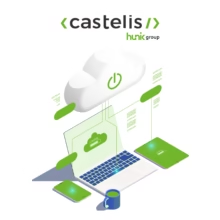
Implementing DMARC in a Large Enterprise: Protect Your Emails with DMARC Advisor
Implementing DMARC in a Large Business is essential to protect its professional email system from cyberattacks. With a large volume of emails sent daily and several domain names to manage, large businesses are prime targets for cybercriminals exploiting phishing and identity theft.
The DMARC (Domain-based Message Authentication, Reporting & Conformance) protocol prevents these abuses by enhancing email authentication and providing monitoring reports. However, setting it up can be complex. DMARC Advisor simplifies this process with an automated, centralized solution, making DMARC deployment and management easier.
In this article, we will explore why DMARC is essential for large businesses, the challenges they face, and how DMARC Advisor optimizes their email security.
Additionally, check out our DMARC guide to understand everything about this protocol, protecting your domains, emails, and improving deliverability.
DMARC Implementation: Why is DMARC Crucial for a Large Business?
Protection Against Phishing and Identity Theft
Cybercriminals often exploit business domain names to send fake emails to customers, partners, or employees. These attacks can have catastrophic consequences:
- Data theft,
- Financial fraud (e.g., CEO fraud),
- Loss of customer trust.
With DMARC, a company can instruct mail servers on how to treat unauthenticated emails sent in its name (quarantine, reject, or monitor).
Improvement of Email Deliverability and Reputation
A domain that falls victim to impersonation can be blacklisted by email providers, affecting the deliverability of official communications. DMARC helps to:
- Strengthen trust with mail services,
- Reduce spam rates,
- Increase the reception rate of professional emails.
Increased Complexity with a Large Number of Domains
Large businesses often have numerous domain names (e.g., brands, subsidiaries, services). Managing DMARC across multiple domains is complex, especially since subdomains can be exploited without the company’s knowledge.
Specific Challenges for Large Businesses in Email Management
Multiplicity of Domains and Subdomains
Most large businesses have dozens, or even hundreds, of domains.
- Difficulty tracking all active domains: without the right tool, it’s easy to lose control of inactive or misconfigured domains.
- Vulnerable subdomains: an overlooked subdomain can be used by attackers to send fake emails.
Lack of Visibility on Domain Abuse
How can you detect phishing attempts exploiting your domain name? DMARC provides reports on emails sent in your name, but manual analysis can be tedious without an automated tool.
Complexity of SPF, DKIM, and DMARC Configurations
SPF and DKIM are necessary for DMARC, but their configuration can be technical:
- SPF: limitation to 10 DNS records, which is a challenge for large businesses.
- DKIM: managing multiple signing keys depending on the services used.
- DMARC: monitoring emails and gradually adjusting the policy.
Why a Solution Like DMARC Advisor is Essential?
Centralized Monitoring of All Domains
DMARC Advisor allows businesses to track all their domains and subdomains from a single interface, eliminating the tedious manual management.
Automated and Actionable Reports
- Alerts on impersonation attempts.
- Visual reports to understand DMARC implementation.
- Email flow analysis without advanced technical expertise.
Simplified Compliance
DMARC Advisor helps businesses comply with email security standards by automating deployment.
Castelis, a cybersecurity expert, partnered with DMARC Advisor, Cloudflare, and Microsoft (Sentinel, Azure…), is here to support you in implementing your DMARC policy.
Steps to Effectively Implement DMARC with DMARC Advisor
Step 1: Map Your Domain Portfolio
- Identify active domains using DMARC Advisor.
- Locate forgotten subdomains.
Step 2: Implement a Progressive DMARC Record
- Start with p=none to monitor without blocking emails.
- Gradually strengthen to p=quarantine and then p=reject.
Step 3: Monitor and Adjust with DMARC Advisor
- Use reports to adjust SPF, DKIM, and DMARC.
- Identify and block abuses in real time.
Best Practices for Successful DMARC Deployment
- Integrate DMARC Advisor with existing solutions: Compatible with Office 365, G Suite, Exchange, and other email services.
- Raise awareness among IT and cybersecurity teams: Train employees on the risks and importance of DMARC.
- Automate DMARC report management: DMARC Advisor helps avoid tedious manual monitoring.
Managing a Vast Domain Portfolio Has Never Been So Simple
DMARC is an essential standard to protect a business from identity theft and email cyberattacks. Its implementation can be complex, but DMARC Advisor simplifies the entire process by providing an effective monitoring and automation solution.
🚀 Set up your DMARC with Castelis and strengthen your email security.
Voir plus de Actualités

Why Microsoft Sentinel is Essential for Cyber Threat Management: A Practical Guide for CIOs

Top best practices to improve email security with DMARC

Cloudflare Zaraz Guide: Manage your third-party scripts at the Edge for better web performance
